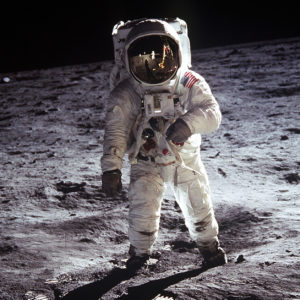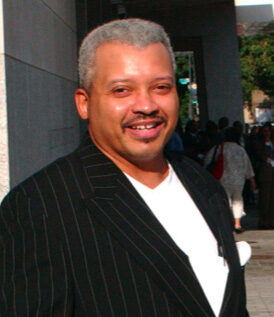Fifty years after the first moon landing, what’s next?
Three former astronauts, gathered on the same dais during a fervent Apollo 11 celebration week in Washington, offered their candid thoughts about what SHOULD be in the future for the space game.
First up, Buzz Aldrin, the second person to walk on the moon (after Neil Armstrong): “Remember when Neil said, ‘One small step for man, one giant leap for mankind.’ Well, we are still looking for that ‘giant leap.’ And I think the public would like to know what is the next step? We need a space alliance. This is not just NASA, not just the U.S. We would have an alliance of nations that needs to venture out on this next step, in space, and they’re not just space agencies.”
Second up, Michael Collins, the third astronaut on Apollo 11: “If you could get the political leaders of the world out at that distance (view from space) and let them look back at their home on Earth, you know, hell, they can’t even find their country. There’s no borders, so if you have a border dispute, well, you have to do something else about it. You can’t fight about it.”
Third up, Charles Bolden, a former commander during the Space Shuttle program: “I know people say, ‘Everywhere in the world has internet.’ That’s not true, not even here in the United States, so we could do a much better job of getting our kids in less developed parts informed and then engaged and inspired to be a Buzz Aldrin or a Mike Collins or a Neil Armstrong, or an Ellen Stofan (director of the Smithsonian Air and Space Museum, the most visited museum in the United States).”
In 2009, President Barack Obama appointed Bolden as head of NASA, thereby becoming the first black person to hold that position on a full-time basis. Bolden’s tenure ended in 2017. Bolden currently serves as the U.S. Science Envoy for Space for the U.S. Department of State.
The three former astronauts, along with Stofan, appeared at George Washington University’s sold-out Lisner Auditorium to address the importance of international space diplomacy in today’s atmosphere, a post-Cold War era in which advanced technology and communications have made the world smaller.
After beating the Soviet Union to the moon in 1969, the United States gained a measure of global gravitas — the envy of the world. Sort of like when a country wins soccer’s World Cup.
Soon after the Apollo 11 astronauts splashed down in the Pacific Ocean in their return to Earth, President Richard Nixon launched his aptly named “Moonglow tour,” designed to establish better diplomatic relations with such countries as South Vietnam, Romania and Thailand.
Guess you call it moon diplomacy.
Nixon also became the first sitting president to visit China and Moscow, both in 1972, the last year of the Apollo mission series as 10 more men had walked on the moon, culminating with Apollo 17.
Fast-forward to 2019.
Said Stofan: “When I traveled when I was at NASA, what struck me was kids being inspired in countries around the world to go into STEM fields. It’s going to help those countries in the long run. It’s going to help them build their economies, it’s going to help them be more resilient to climate change. And stronger countries around the world make it easier for the United States, and so to me, it’s a win-win.”
All of which brings us to Artemis, the twin sister of Apollo and the Greek goddess of the moon. It’s essentially the Apollo Rocket 2.0 — like the “Six Million Dollar Man” … bigger, stronger, faster.
Jim Bridenstine, current head of NASA, recently explained the Artemis mission statement, “We are going to land the first woman on the moon within five years, with an eye for eventually getting to Mars.”
Bridenstine added that NASA would maintain a presence on the moon and that of the 38 individuals in today’s astronaut program, 12 are women.
Which probably would please trend-setting former first lady Jackie Kennedy Onassis if she were alive. In 1969, there were no active female astronauts. Or black astronauts at the ready.
Eight days after the moon landing in July ’69, Jackie proudly wore a pair of stunning Apollo 11 earrings, gifted by her new husband Aristotle Onassis, a Greek shipping magnate, for her 40th birthday. A different kind of international diplomacy, we presume.
The custom-made, gold-and-ruby-colored earrings were designed in a moon-and-spacecraft motif. In 1996, they were sold at a Sotheby’s auction for $112,500.
Now the United States — possibly with global financial assistance, as described by Buzz Aldrin’s advocacy of a space alliance — aims for the Next Frontier again, on a grander scale. All of this could launch a futuristic international space economy with the possible help of western Europe, India, Japan. Plus billionaires Elon Musk (SpaceX), Richard Branson (Virgin Galactic) and Jeff Bezos (Blue Origin), as well as NASA.
The moon, then on to Mars … and perhaps beyond.


